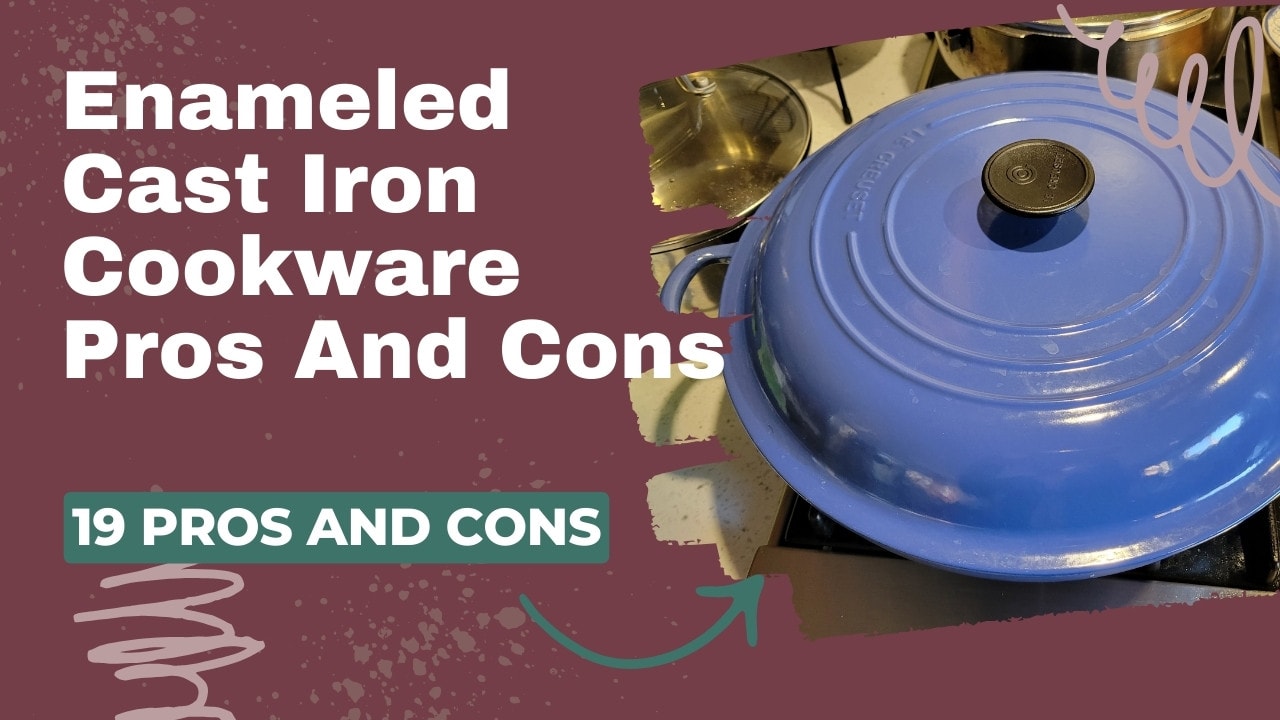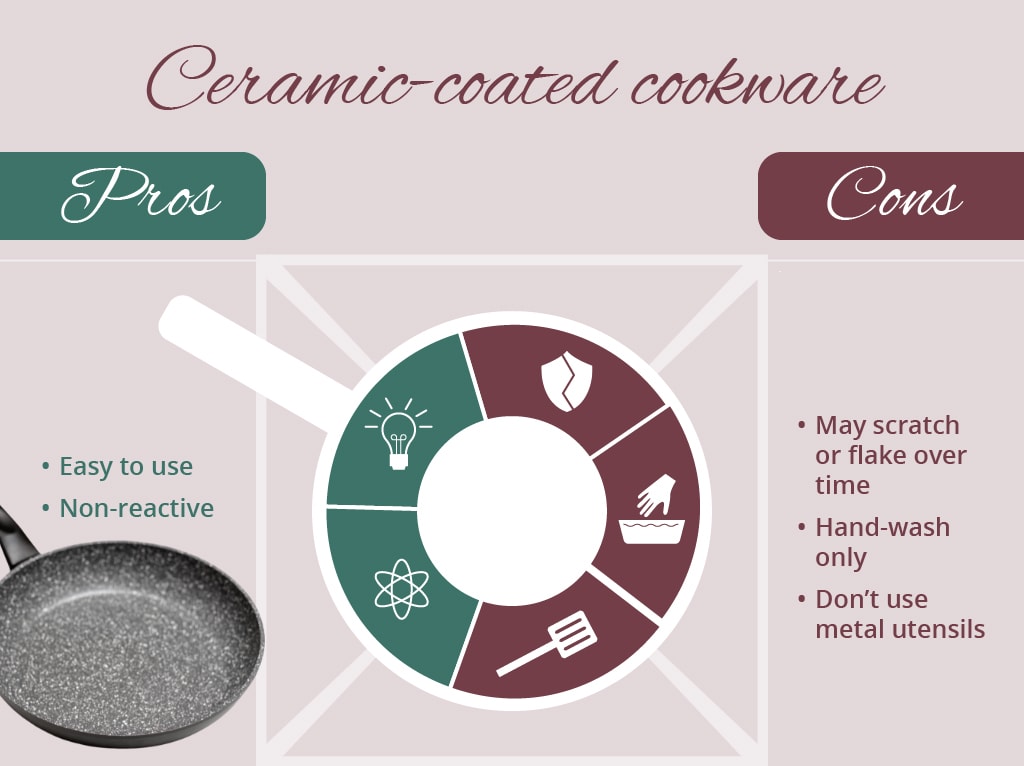As an Amazon Associate, I earn from qualifying purchases
Enamel cookware features fired coating on steel or cast iron, while ceramic cookware has a non-stick coating inside. When comparing enamel and ceramic cookware, it’s essential to understand their unique properties and benefits.
Enamel cookware boasts a durable coating that can withstand high temperatures and is great for stovetop-to-oven cooking. On the other hand, ceramic cookware offers a non-stick surface that is ideal for healthier cooking with less oil. Both types have their advantages, so choosing the best option depends on your cooking preferences and needs.
We will delve deeper into the differences between enamel and ceramic cookware to help you make an informed choice for your kitchen.

Credit: www.reddit.com
Table of Contents
TogglePros And Cons Of Enamel Cookware
Enamel cookware offers even heat distribution and is durable, but it may chip or stain easily. Ceramic cookware, on the other hand, provides a non-stick surface and is lightweight, but it’s less resistant to heat and may not be as durable in the long run.
Each option has its own advantages and downsides to consider.
Advantages Of Enamel Cookware
Enamel cookware is known for its vibrant colors and stylish designs. It is durable and resistant to scratches, making it a long-lasting option for your kitchen. The smooth enamel coating prevents food from sticking and is easy to clean with just soap and water.
Disadvantages Of Enamel Cookware
Enamel cookware can be heavy and may require careful handling to prevent chipping or cracking. The enamel coating may chip over time, exposing the metal underneath. It is also not suitable for use with metal utensils as they can damage the enamel surface.

Credit: theskillfulcook.com
Pros And Cons Of Ceramic Cookware
Ceramic cookware has gained popularity in recent years due to its non-stick properties and eco-friendly materials. However, like any cookware, it has its share of pros and cons. In this section, we will explore the advantages and disadvantages of using ceramic cookware.
Advantages Of Ceramic Cookware
1. Non-stick properties: Ceramic cookware is known for its excellent non-stick surface, which allows for easy food release and reduces the need for excessive oil or butter in cooking.
2. Health benefits: Unlike traditional non-stick coatings that may release toxic fumes at high temperatures, ceramic coatings are made from natural materials and are free of harmful chemicals such as PFOA and PTFE.
3. Even heat distribution: Ceramic cookware offers excellent heat distribution, ensuring that your food cooks evenly and prevents hot spots that can lead to unevenly cooked meals.
4. Easy to clean: The non-stick surface of ceramic cookware makes it a breeze to clean. Most of the time, a simple wipe with a damp cloth or gentle handwashing is all that’s needed to remove any residue.
5. Durability: Ceramic cookware is known for its durability and resistance to scratches and wear. With proper care, it can last for a long time.
Disadvantages Of Ceramic Cookware
1. Fragility: While ceramic cookware is durable, it is more susceptible to chipping or cracking compared to other materials like stainless steel or cast iron. Care should be taken when handling and storing ceramic cookware to prevent damage.
2. Not suitable for high heat: Ceramic cookware is not recommended for high-temperature cooking methods such as broiling or searing. High heat can cause the ceramic coating to deteriorate over time.
3. Limited color and design options: Unlike other types of cookware, ceramic cookware generally comes in a limited range of colors and designs. This may be a disadvantage for those who prefer a wide variety of options.
4. Longer preheating time: Ceramic cookware may require a longer preheating time compared to other materials due to its heat retention properties. This may not be ideal for those who want to quickly start cooking.
Overall, ceramic cookware offers several advantages such as non-stick properties, health benefits, even heat distribution, and easy cleaning. However, it is important to consider its fragility, limited heat resistance, design options, and longer preheating time when deciding if ceramic cookware is the right choice for you.
Health And Safety Comparison
When it comes to cookware, the health and safety considerations are paramount. Let’s take a closer look at the comparison of health aspects in enamel and ceramic cookware as well as the safety considerations in each.
Comparison Of Health Aspects In Enamel And Ceramic Cookware
Before choosing between enamel and ceramic cookware, it’s important to consider the health aspects involved. Ceramic cookware is often praised for being non-toxic and free from harmful chemicals such as PFOA and PTFE. This makes it a safe choice for preparing meals that require minimal oil or fat, promoting a healthier lifestyle.
On the other hand, enamel cookware, particularly enamel-coated cast iron, also offers health benefits due to its non-reactive nature. This means that it doesn’t leach any harmful substances into the food, ensuring that the flavors and nutrients remain intact.
Both enamel and ceramic cookware are relatively easy to clean, making them ideal for maintaining a hygienic cooking environment.
Safety Considerations In Enamel And Ceramic Cookware
When considering safety, ceramic cookware stands out for its ability to withstand high temperatures without emitting toxic fumes. This makes it a safe choice for versatile cooking methods, including stovetop and oven use.
Similarly, enamel cookware is known for its durability and ability to retain heat evenly, ensuring that the cooking process is efficient and safe.
It’s important to note that both types of cookware require proper handling to prevent chipping or scratching the coating, which could potentially compromise the safety and functionality of the cookware.
“`In summary, the health benefits of ceramic cookware stem from its non-toxic properties, while enamel cookware offers non-reactive and easy-to-clean qualities. When it comes to safety, ceramic cookware is recognized for its high-temperature endurance, whereas enamel cookware is noted for durability and even heat distribution. Both types require careful handling to maintain their safety and functionality.
Credit: theskillfulcook.com
Frequently Asked Questions On Which Is Better Enamel Or Ceramic Cookware
Is Enamel Cookware The Same As Ceramic?
Enamel cookware and ceramic cookware are similar, but with a few key differences. Enamel is a colored coating on the exterior of cookware, while ceramic is a non-stick coating on the inside. Both have their advantages and disadvantages, so choose based on your cooking needs and preferences.
What Is The Healthiest Cookware To Use?
The healthiest cookware options include stainless steel, ceramic, glass, and cast-iron pots and pans, as they are non-toxic.
Is Ceramic Stronger Than Enamel?
Ceramic is stronger than enamel as it is harder and more durable.
What Are The Disadvantages Of Enamel Cookware?
Enamel cookware has some disadvantages including being heavy, needing to be hand washed, the risk of chipping or scratching, hot handles, no use of metal utensils, potential stains, hairline cracks, and no broiling.
Conclusion
When comparing enamel and ceramic cookware, it is important to consider their differences. Enamel cookware is coated on the outside and can be heavy and prone to chipping. On the other hand, ceramic cookware has a non-stick coating on the inside, making it ideal for delicate foods.
Both have their advantages and disadvantages, so it ultimately comes down to personal preference and cooking needs.
As an Amazon Associate, I earn from qualifying purchases
